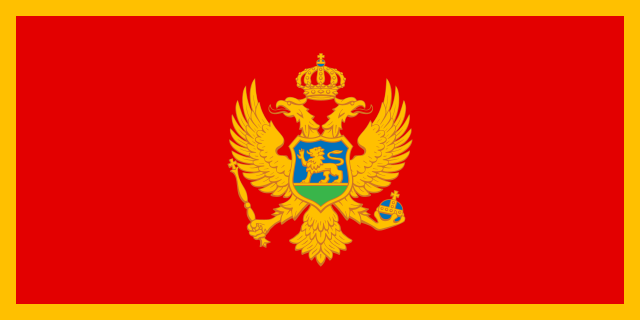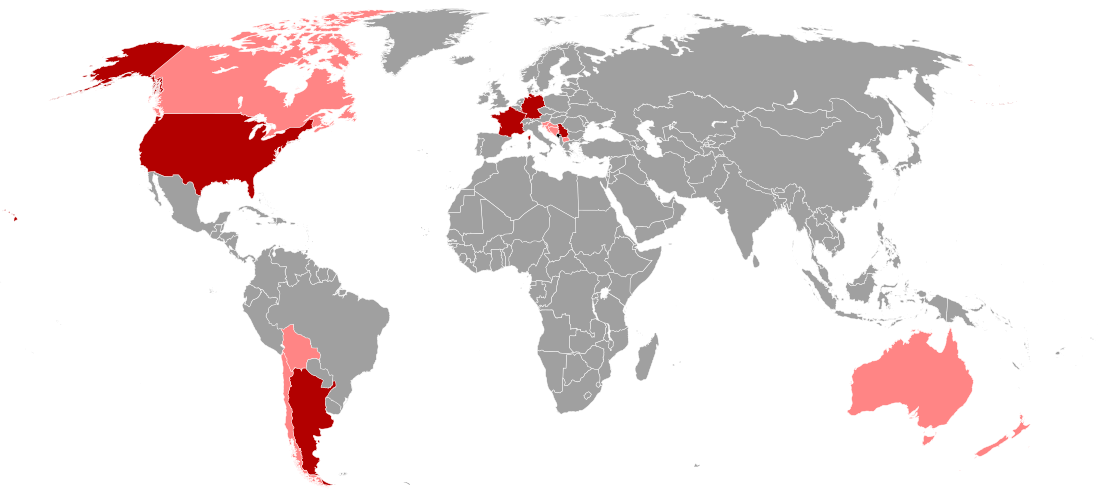Top Qs
Timeline
Chat
Perspective
Montenegrins
South Slavic ethnic group From Wikipedia, the free encyclopedia
Remove ads
Montenegrins (Montenegrin: Crnogorci / Црногорци, lit. 'People of the Black Mountain', pronounced [tsr̩nǒɡoːrtsi] or [tsr̩noɡǒːrtsi]) are a South Slavic ethnic group that share a common ancestry, culture, history, and language, identified with the country of Montenegro.
Montenegrins are mostly Orthodox Christians; however, the population also includes Catholics, Muslims and irreligious people. The Montenegrin language is the official language of Montenegro.
Historically, the Montenegrin nation comprised many tribes. Most tribes formed in the 15th and 16th centuries, about the time when the Ottoman Empire established its control of the medieval state of Zeta. Today, the tribes are mainly studied within the frameworks of social anthropology and family history, as they have not been used in official structures since the time (1852-1910) of the Principality of Montenegro; however, some tribal regions overlap with contemporary municipal areas. The kinship groups give a sense of shared identity and descent.[26]
Outside of Montenegro and Europe, Montenegrins form diaspora groups in (for example) the United States, Canada, Australia and Argentina. It is estimated that around 600,000 Montenegrin-descended people reside outside of Montenegro.[27][28] In 2023 a total of 152,649 Montenegrins both held Montenegrin citizenship and resided outside of Montenegro.
Remove ads
Genetics
According to one triple analysis – autosomal, mitochondrial and paternal — of available data from large-scale studies on South Slavs and their proximal populations, the whole genome SNP data situates Montenegrins with Serbs in between two Balkan clusters.[29] According to a 2020 autosomal marker analysis, Montenegrins are situated in between Serbs and Kosovo Albanians.[30]
Y-DNA genetic study done in 2010 on 404 male individuals from Montenegro gave the following results: haplogroup I2a (29.7%), E-V13 (26.9%), R1b (9.4%), R1a (7.6%), I1 (6.1%), J2a1 (4.7%), J2b (4.4%), G2a (2.4%), Q (1.9%), I2b (1.7%), N (1.4%), H (1.4%), L (1.2%), and J1 (0.49%).[31] A 2022 study on 267 samples from northeastern Montenegro found that the "most common haplogroups are I2 and R1b, both identified in 23.97% of samples, followed by E (22.47%), J2 (11.61%), I1 (6.74%), G2 (3.75%), R1a (3.37%), I1 (1.12%), G (1.12%), N (0.75%), C (0.37%), T1 (0.37%) and Q1 (0.37%)".[32]
Remove ads
History
Summarize
Perspective
Middle Ages
Slavs settled in the Balkans during the sixth and seventh centuries. According to De Administrando Imperio, there existed three Serb polities on the territory of modern Montenegro: Duklja, roughly corresponding to the southern half; Travunia, the west; and the Principality of Serbia, the north. Duklja emerged as an independent state during the 11th century, initially held by the Vojislavljević dynasty; it was conquered and incorporated into the state of the Nemanjić dynasty. De Administrando Imperio does not mention which Slavic people lived in Duklja,[33] but the state was considered to be one of the first Serb states, alongside Raška formed chiefly under the Vlastimirović and Vojislavljević dynasties respectively.[34][35]
In the late 14th century, southern Montenegro (Zeta) came under the rule of the Balšić noble family, then the Crnojević noble family; by the 15th century, Zeta was more often referred to as Crna Gora (Venetian: Monte Negro). The Crnojevići were driven out from Zeta by the Ottomans and forced to retreat above the Bay of Kotor where they built a monastery and a royal court in Cetinje, the future royal capital of Montenegro, before eventually fleeing to Venice.[36]

Yugoslav era

Annexation of the Kingdom of Montenegro on 13 November 1918 gained international recognition at the Conference of Ambassadors in Paris, held on 13 July 1922.[37]
Although Montenegrins comprised one of the smallest ethnic groups in the state (2.5% in 1971), they were the most overrepresented ethnic group in the Yugoslav bureaucracy, military, and communist party organs. In the Yugoslav People's Army, 19% of general officers and 30% of colonels were ethnic Montenegrins. Among party elites, Montenegrins made up 16% to 21% of senior officials throughout the existence of communist Yugoslavia, and comprised a similar portion of the state's diplomatic corps.[38][39] Montenegrins were over-represented among Yugoslavia's elite, largely due to the pre-war strength of the Communist Party of Montenegro, the high proportion of Montenegrins among Partisan commanders and Central Committee members during the war, and a historically militaristic culture.[40][41] During this period, ethnic Montenegrins also held about 15% of government jobs in Yugoslavia.[42]
Remove ads
Language
In the census held in 2023, 71.4% of ethnic Montenegrins in Montenegro declared Montenegrin as their native language, 22.9% Serbian and 2.9% indicated Serbo-Croatian.[43]
Religion
Most Ethnic Montenegrins are Eastern Orthodox. A majority of them adhere to the Serbian Orthodox Church, while a minority of them adhere to the Montenegrin Orthodox Church; the latter is registered as a non-governmental organization[44] and is canonically unrecognised by the Eastern Orthodox Church.[45][46]

See also
References
External links
Wikiwand - on
Seamless Wikipedia browsing. On steroids.
Remove ads

